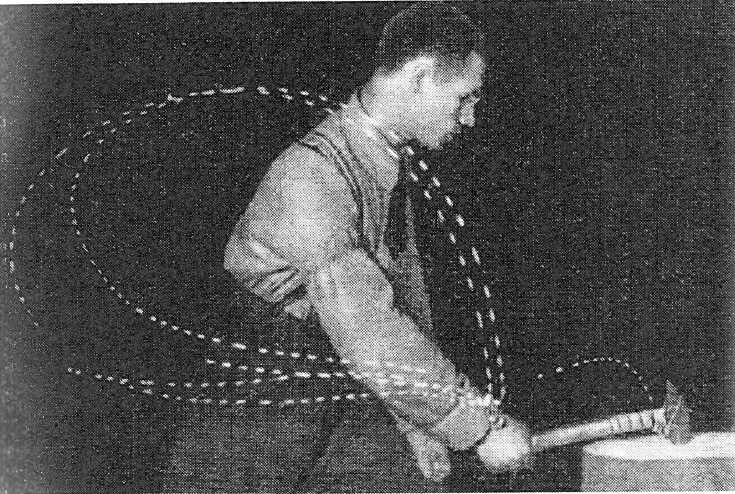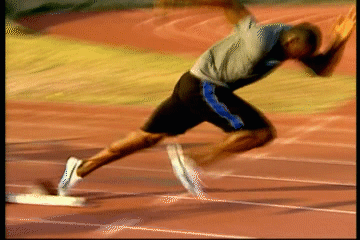Spend all week lecturing on different subjects on different levels and for different sports.
And it barely matters what the subject is, the same question comes up all the time: is it better to start to be involved in your specific sport at an early age, or is it better bud a broad foundation of motor experience by practicing different sports first?
The idea is that practising other movements will enhance or create a motor foundation for the sport you want to excel in.
It’s not easy to give a simple and clear answer to this question, since it depends what sport we are talking about: darts of rugby, gymnastics or discus throwing, rowing or basketball, swimming or football. It can hardly be that the answer would be the same for all sports. Some coaches come up with a “bright, new” concept in motor learning: “differential learning”.
Now if there is one source of confusion in sports, and in which there is hardly any consensus, it is the field of motor learning, where everybody can find examples of athletes who mastered technique within one season and athletes who needed 10-12 years to master the same skill. Perhaps the confusion is about the word “mastering”.
And we can find examples of elite athletes who started at a very early age and reached the top like Tiger Woods or the Williams sisters. But at the other hand you can find examples of athletes who started late and still made it to the top!
So what is this mastering: does it mean: stability in technique under any possible circumstance in competition or does it mean finding a different adequate solution to an ever changing situation?
To make it more clear: let’s take in the 100 meters: there is strong headwind today, so do you still try to maintain your running technique (e.g. the same amount of strides), despite the head wind or do you forget about that and find a new strategy to cope with the find, e.g. shorten your stride?
Interesting question, isn’t it?
Concerning differential learning: I think we know for almost 2000 years that only running 100 meters as preparation for 100 meters will take you somewhere, but not to the end. But it will take you further than juggling three balls as a preparation for running a fast 100 meter.
And we vary our training as long as the history of sprints, we have a tremendously wide range of exercises and drills that one way or another contribute to sprinting faster.
So here is my thought-experiment: I will start training a group of 120 athletes (male or female) for sprints at 16 years old, but I already divided these kids when they were 12 years old and all running about the same time at 60 meters.
- Group A of will do nothing and wait 4 years without doing sports at all.
- Group B will do another sports like juggling, shooting, fencing, or cycling, climbing, swimming, weightlifting, not much related to sprints or moving forward fast, for 4 years.
- Group C will practice a sports that also involves moving forward fast or sprinting: field hockey, basketball, soccer, tennis, etc, for 4 years
- Group D will start training for sprints with me when they are 12 years old , so for 4 years.
Which group will do better in sprints when they are 16 and which group will to better when they are 24/25 years old?
I bet many coaches swill say that group C will to best, since they have a wide foundation of moving forward from all positions.
But will they really do better because of motor learning or just because they improved their conditioning, they got stronger, better endurance etc.
And how many of each group will drop out because of injuries or overload?
Another question pops up most of the time:
Is your competition technique always the same or always different?
Well, also this is hard to answer, but here is an idea. In his research The Russian neurophysiologist Nicolai Bernstein looked at simple, stereotype movement patterns like hitting an object with a hammer. For observers it looks like every movement is pretty much the same and even for the subject involved it felt like every movement is the same like the ones before. But analyzing the movement it showed that a movement is never the same like the ones before! It’s like: you never cross the same river twice.

At least this answers the question: is there a ideal or perfect technique?
Well, even is there is one, you can only repeat it once!
Of course the real confusion is about the word: the “same”.
Am I the same person like last year, last week or an hour ago? The answer is NO, from outside I might look the same or I even might feel the same, but inside my body thousands of cells died and thousands of cells were replaced and renewed. Millions of new connections were formed in my brain since last years or even an hour ago.
It all depends on you space-time scale. On macrolevel, I am the same, on microlevel I am different.
The same for movements: on macrolevel it is the same movement, but on microlevel it’s different all the time.
I think this important to clarify: only on a smaller scale you start to see differences.
Next step: should we be stabilizing technique on macrolevel or should we accept and stimulate variations on microlevel.
I never saw this as a contradiction: but found you have to do both at the same time. Athletes for sure aren’t robots that you can program to execute the same movements all the time anyway and it would be stupid to do since like in sprints even the surface on which they sprint, changes from track to track and their muscles have to adjust their elasticity and stiffness all the time.
The only real issue is to combine two basic “truths”:
-you improve what you train
-there is a certain level of transfer/overflow from one movement skill to another
Our challenge will be to find the middle ground between those two “ truths” for each sport and each individual.

